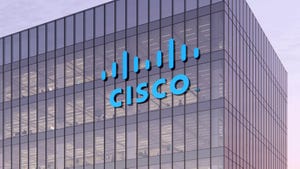Geothermal Power in Data Centers: Benefits, Drawbacks, and the Road AheadGeothermal Power in Data Centers: Benefits, Drawbacks, and the Road Ahead
Geothermal energy can reduce data center power bills and improve sustainability, but high installation costs and location limitations remain key challenges.

At first glance, geothermal energy may seem like the perfect solution for data centers committed to sustainability – and it is, in some cases. Under the right conditions, geothermal allows data center operators to cool down and power IT equipment for a fraction of the energy cost associated with traditional cooling and power systems.
On the other hand, geothermal power can present some deep challenges. Whether geothermal makes sense for a given data center depends on the extent to which those challenges can be overcome, as well as how rapidly geothermal cooling and energy generation technology evolves.
How is Geothermal Energy Used in Data Centers?
Geothermal is a type of energy solution that sources energy from under the earth’s surface.
In the context of data centers, geothermal energy can be used to do two main things. First, it can generate electricity – as Meta plans to do in a new data center equipped with geothermal power, for example.
Typically, geothermal electricity generation works by using heat from inside the earth to power turbines that create electricity. In turn, data centers can use that electricity to power servers, HVAC systems and virtually any other resource.

A simplified diagram of a geothermal power plant (Image: Alamy)
The benefit of this approach is that geothermal energy is renewable and doesn’t require the burning of fossil fuels, so it’s a cleaner energy source than the ones data centers can typically obtain from the grid.
In addition, geothermal offers the advantage of being able to produce electricity during any season or time of day, which is not the case with renewable energy sources like wind and solar.
The second main use case for geothermal energy in data centers is cooling. This usually involves circulating liquid beneath the earth’s surface, where temperatures are cooler than they are inside data centers.
From there, the liquid can be used either to cool equipment directly through liquid cooling systems, or it can chill air that is then blown across server racks.
Using geothermal energy to cool data centers doesn’t allow facilities to source renewable energies in place of “dirty” fuels. But it does make it possible to reduce the electricity needed to cool down IT equipment – so it can cut back on the total electricity usage of a data center, and by extension, reduce the amount of fossil fuels used by the facility.

Harnessing geothermal energy to power and cool data centers can help reduce reliance on traditional energy sources (Image: Alamy)
Challenges to Geothermal-Powered Data Centers
If geothermal can significantly reduce data center energy needs, why isn’t it in widespread use?
The answer is that there are several barriers to geothermal energy adoption within data centers:
1. Installation cost
Cost is probably the biggest challenge that data center operators face when considering geothermal. Although the ongoing operating costs of geothermal systems are low, upfront geothermal installation costs are high because they require deploying equipment deep below the earth’s surface, as well as purchasing specialized energy generators and/or cooling systems.
2. Limited site suitability
Geothermal only works in locations where subsurface temperatures are suitable for energy generation and/or cooling.
This makes it impractical to install geothermal systems adjacent to some data centers – and while sourcing geothermal energy from remote locations may be an option in places where local geothermal is not viable, doing so doesn’t offer any benefits that data center operators could not obtain by acquiring any other type of renewable energy from the grid.
3. Risk of failure
Geothermal systems can fail, and be costly to repair, if underground components are distributed by events like earthquakes. While this risk is relatively low, it can make geothermal undesirable in data centers because they typically can’t tolerate any downtime.
If your only cooling system relies on geothermal but the system breaks down, for example, you’ll need to shut down your entire data center. And while it might be possible to create backup cooling systems that use other energy sources, doing so would add to the cost associated with geothermal, making geothermal systems a harder pill to swallow for data center operators concerned with ROI.
Geothermal energy generators are less challenging in this respect because it’s typically not very expensive to use the grid as a backup power source in the event that a local geothermal generator fails.
4. Geothermal doesn’t eliminate electricity usage
Geothermal systems can reduce a data center’s electricity usage or provide a source of clean electricity to supplement power obtained from the grid. However, geothermal cooling is not electricity-free. Electricity is still needed to circulate fluid under the earth, and in some cases to cool it down further before using it to dissipate heat from IT equipment. As for geothermal generators, they can produce the energy they need to operate, but like any mode of energy generation, they are less than completely efficient – which means some energy is wasted.
Read more of the latest data center sustainability news
The Future of Geothermal Energy and Data Centers
Challenges like these mean that, although we’re likely to continue to see some investment in geothermal initiatives (like one recently announced in Indonesia) within the data center industry, don’t expect geothermal to revolutionize data center sustainability anytime soon.
That may eventually change if geothermal technology becomes more efficient or reliable. But for now, geothermal appears poised to remain a niche energy solution for data centers.
About the Author
You May Also Like








